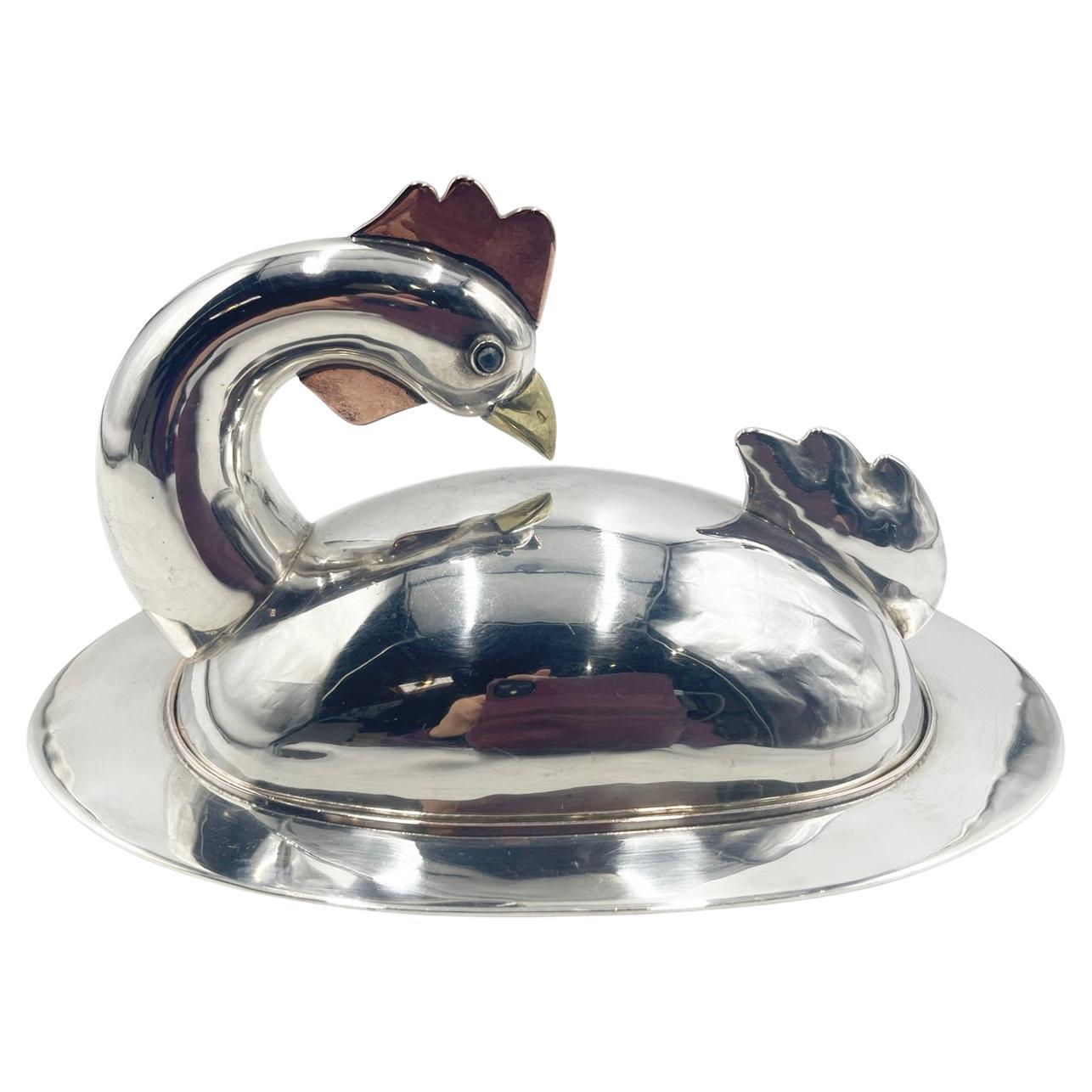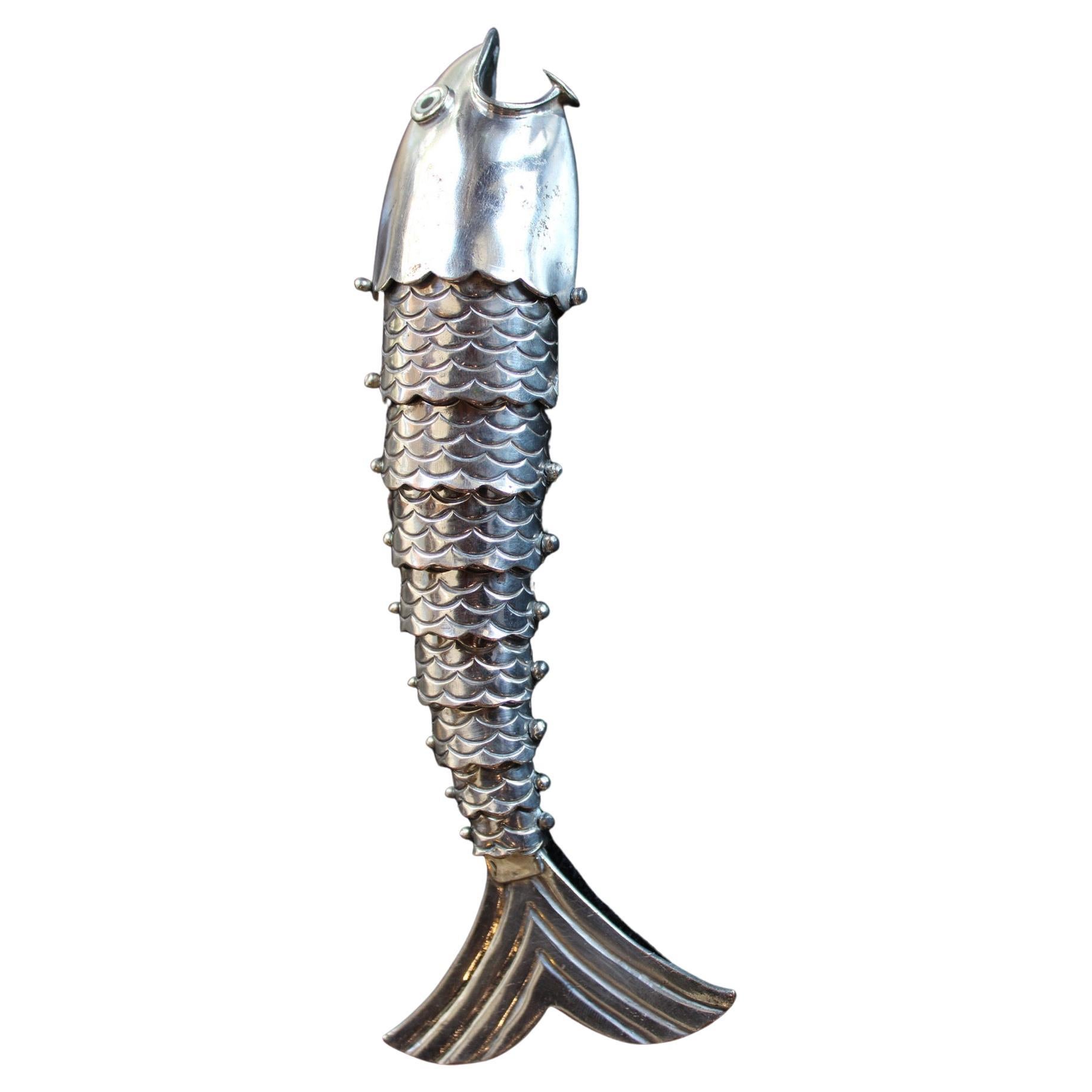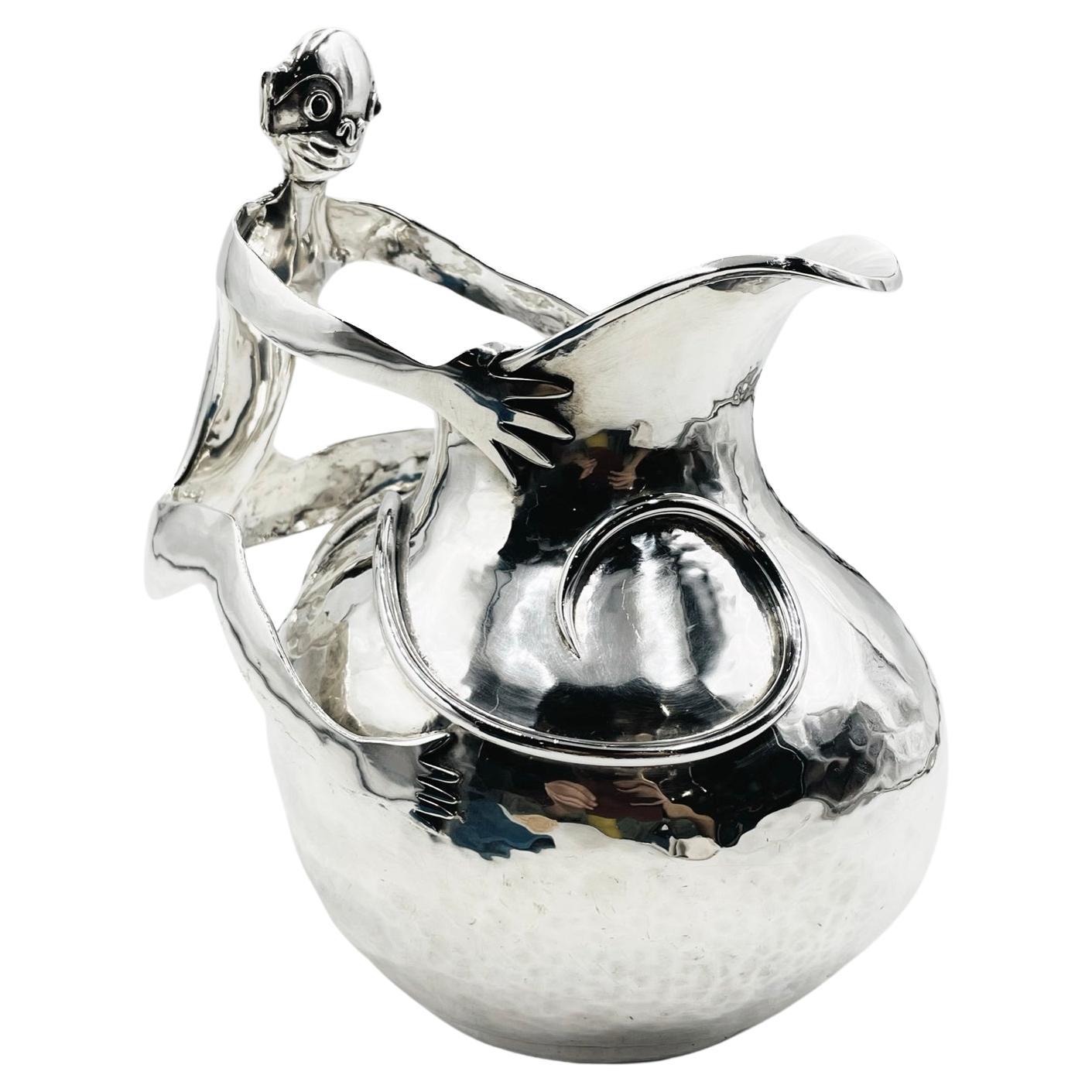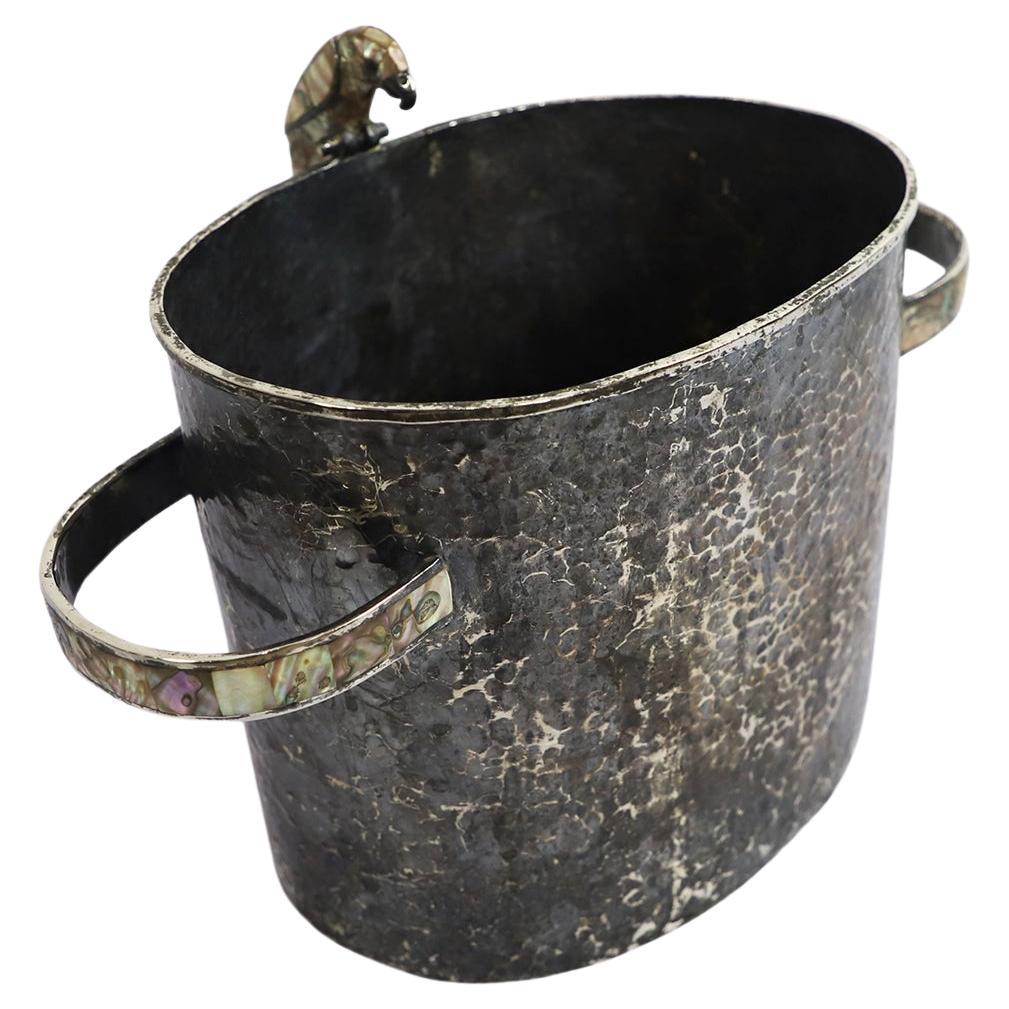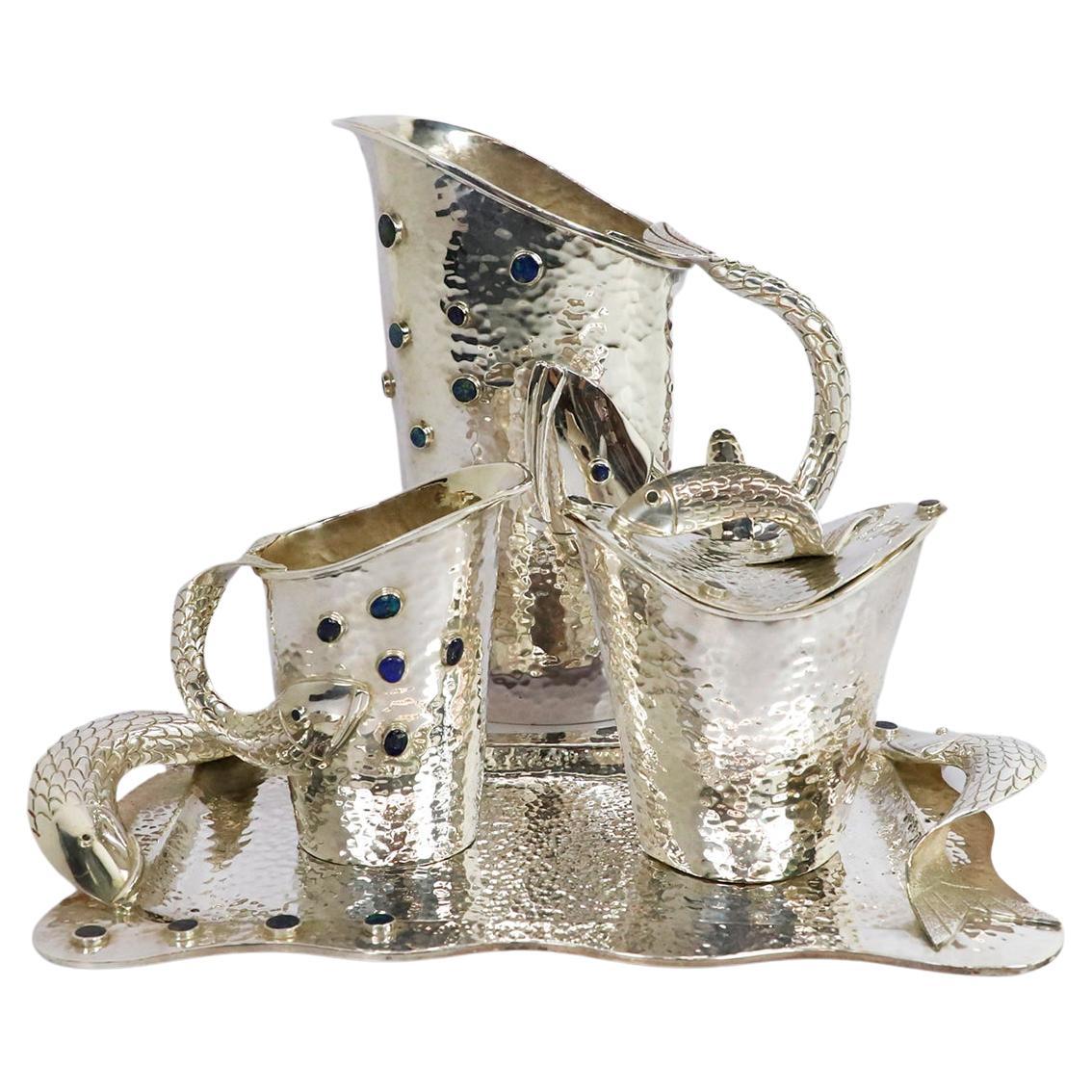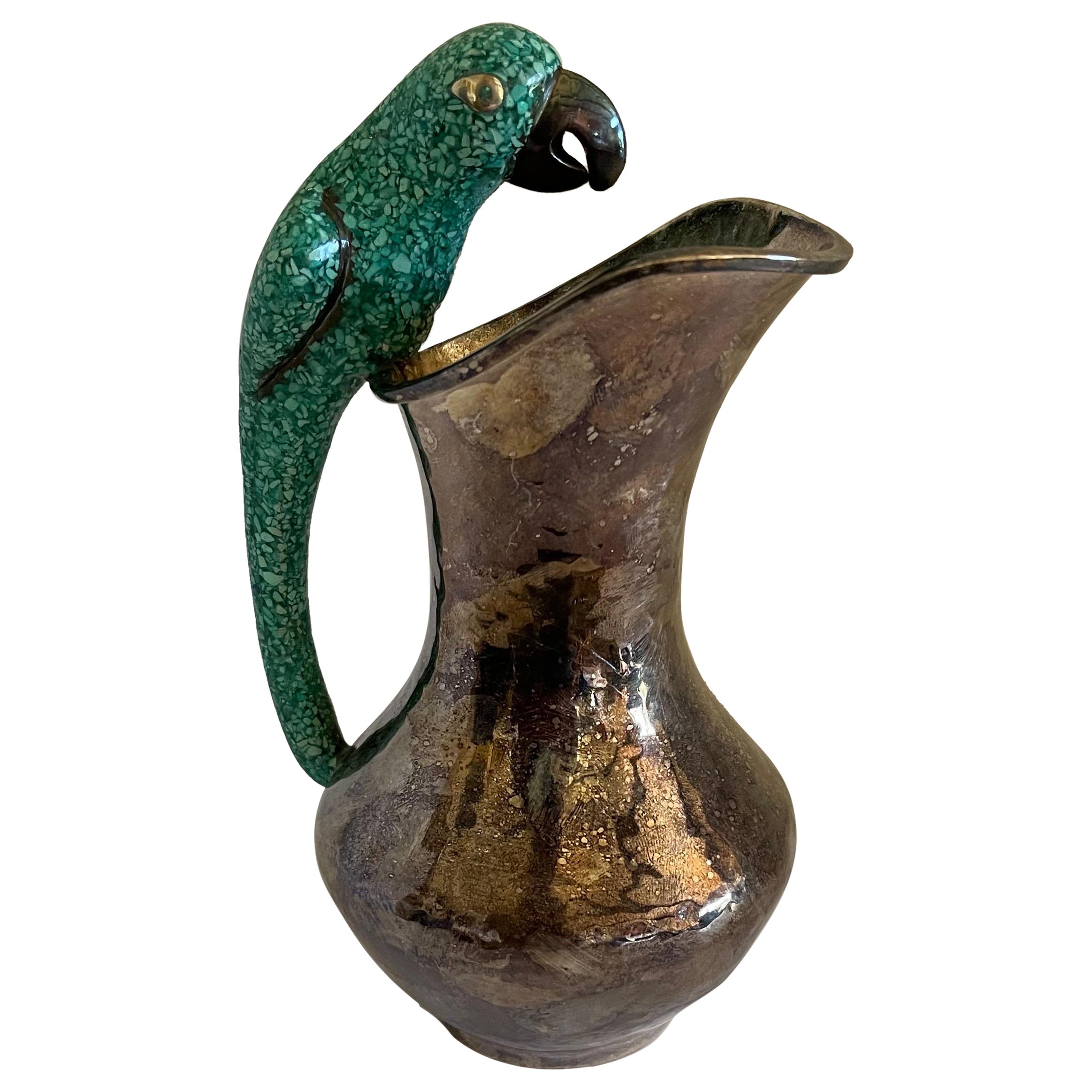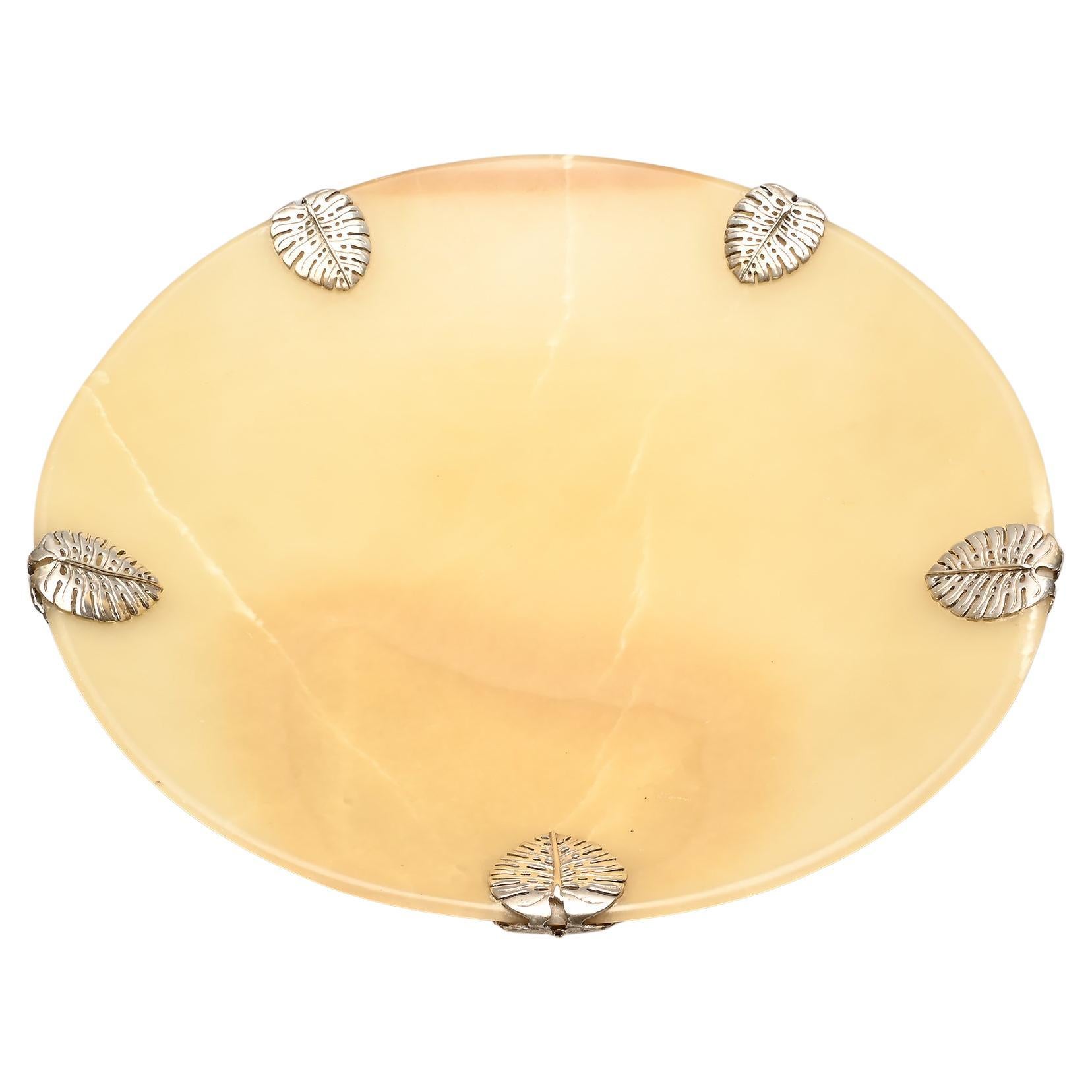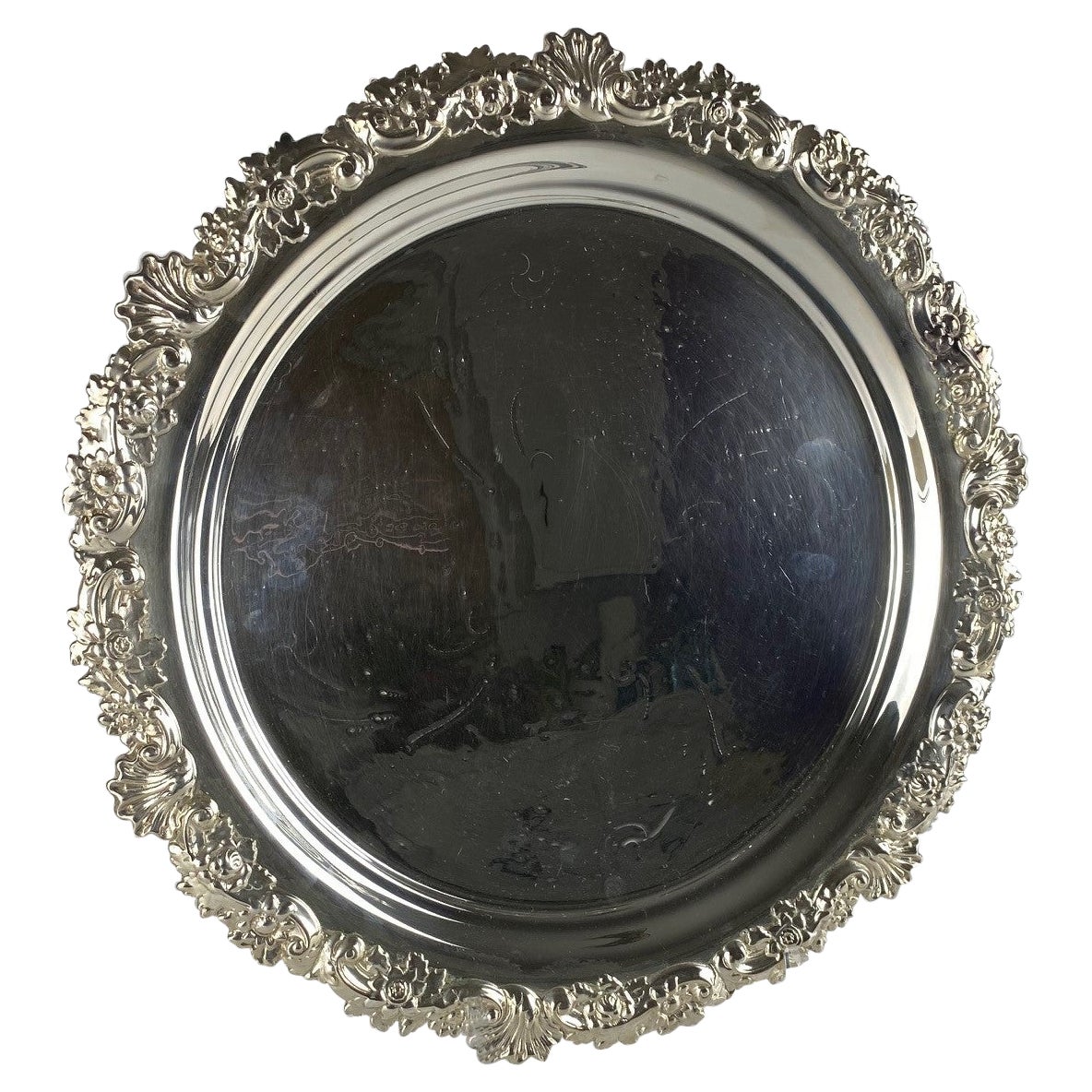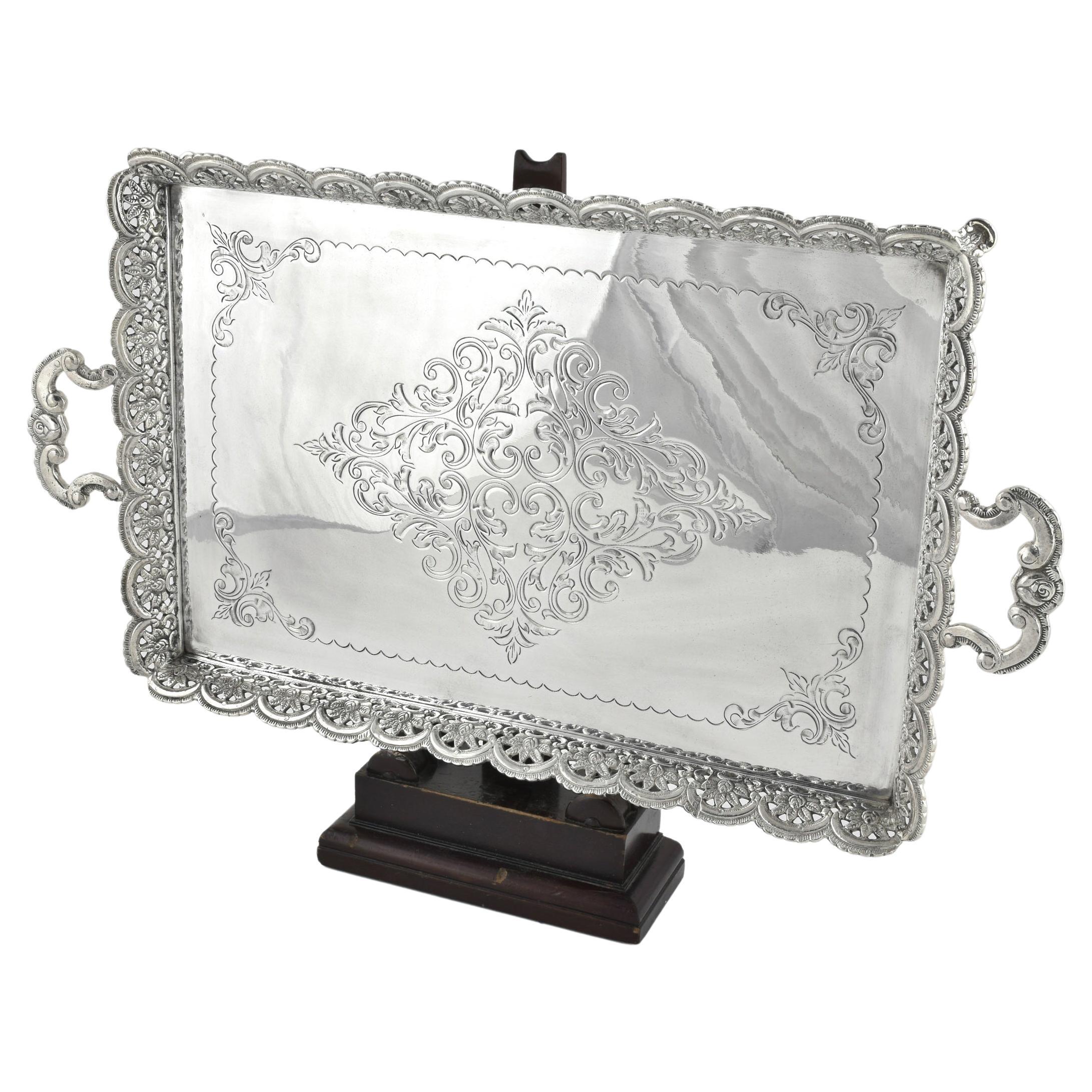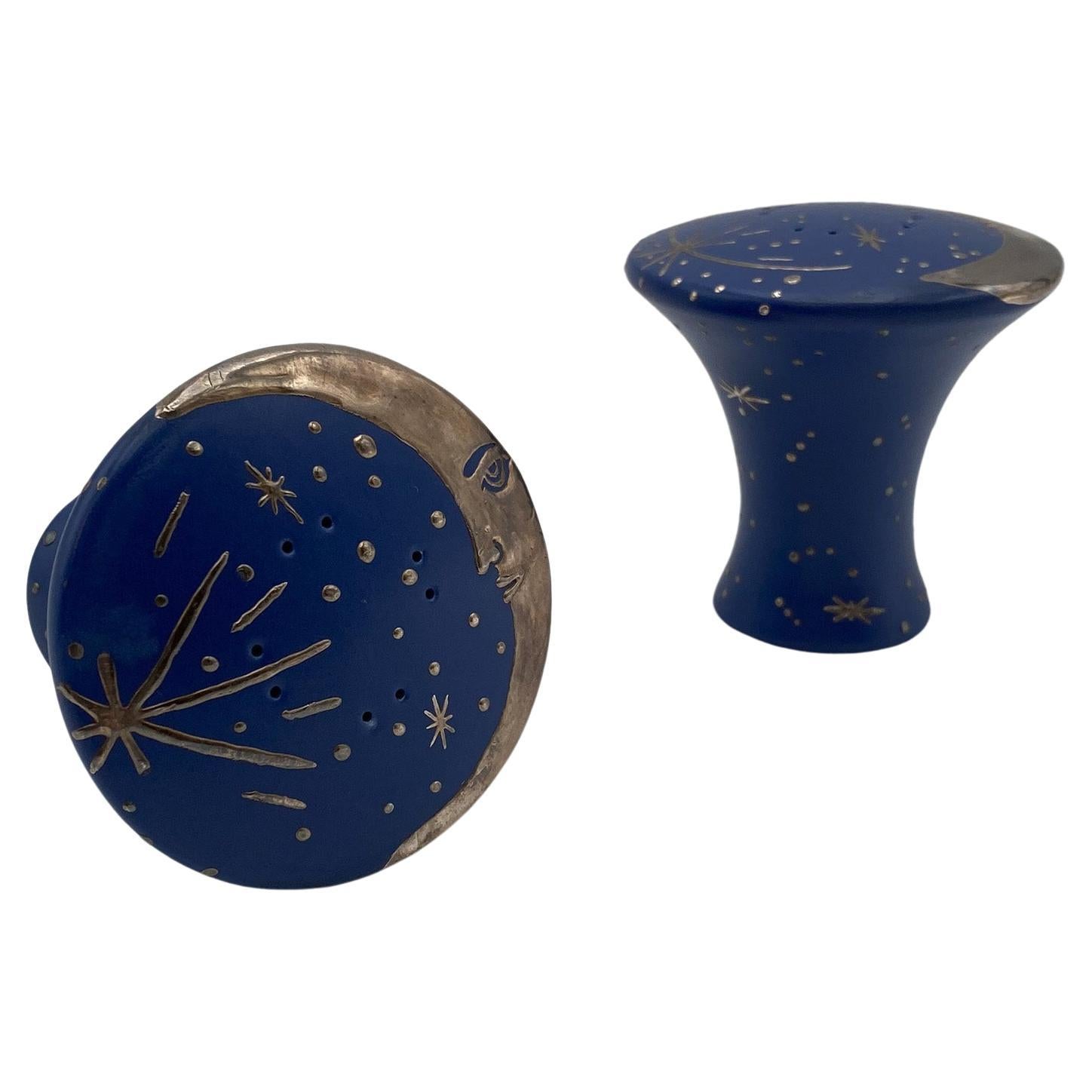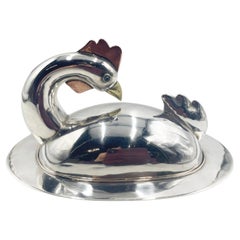
Silver Plated Alligator and Fish Tray by Mexican Artist Emilia Castillo
View Similar Items
Want more images or videos?
Request additional images or videos from the seller
1 of 5
Silver Plated Alligator and Fish Tray by Mexican Artist Emilia Castillo
About the Item
- Creator:Emilia Castillo (Artist)
- Dimensions:Height: 1 in (2.54 cm)Width: 8.5 in (21.59 cm)Depth: 8.5 in (21.59 cm)
- Materials and Techniques:
- Place of Origin:
- Period:
- Date of Manufacture:circa 1980
- Condition:Wear consistent with age and use.
- Seller Location:San Francisco, CA
- Reference Number:1stDibs: LU128024896143
About the Seller
5.0
Platinum Seller
These expertly vetted sellers are 1stDibs' most experienced sellers and are rated highest by our customers.
Established in 2014
1stDibs seller since 2015
1,144 sales on 1stDibs
More From This SellerView All
- 19th C. Mexican Retablo, C.1880Located in San Francisco, CAABOUT An original 19th century Mexican folk retablo. Oil paint on tin. Subject unknown. CREATOR Unknown. DATE OF MANUFACTURE c.1880. MATERIALS AND TECHNIQUES Oil Paint on Tin. CONDITION Good. Wear consistent with age and use. DIMENSIONS H 14 in. W 10 in. HISTORY Retablos, better known as 'laminas' in Mexico, are small oil paintings on tin, wood and sometimes copper which were used in home altars to venerate the almost infinite number of Catholic saints. The literal translation for 'retablo' is 'behind the altar.' This unique genre of art, deeply rooted in European history, was brought to Mexico with the arrival of the Spanish and then ultimately adopted by New World mestizo natives to become what is known today as the Mexican folk retablo. The retablo was an art form that flourished in post conquest Mexico and then ultimately, with the introduction of inexpensive mediums such as tin, reached its pinnacle of popularity in the last quarter of the 19th century. With some exceptions, mostly untrained artists from the provinces worked to produce and reproduce these sacred images; some subjects painted more prolifically than others. A typical "retablero" may have reproduced the same image hundreds, if not thousands of times in his or her career. These oil paintings were sold to devout believers who displayed them in home altars to honor their patron saints. There are virtually hundreds of saints, each invoked to remedy a different situation. "San Ysidro Labrador," the patron saint of farmers, is venerated for good weather...Category
Antique 19th Century Mexican Folk Art Paintings
MaterialsTin
$1,395 Sale Price36% Off - Handmade Leather Mexican Carrying Case, C.1900-1940Located in San Francisco, CAAbout An all leather handmade carrying case from Mexico with incised leather on both sides and intact leather strap. The leather strap is woven throug...Category
Early 20th Century Mexican Folk Art Trunks and Luggage
MaterialsLeather
- 19th C. Mexican Retablo Saint Francis c.1880Located in San Francisco, CAAbout An original 19th century Mexican folk retablo of Saint Francis. Oil paint on tin. St. Francis of Assisi, Italian San Francesco d’Assisi was born 1181-1182 in Assisi, duchy of Spoleto, Italy and died October 3, 1226. He was canonized July 16, 1228. He founded the Franciscan orders of the Friars Minor and the lay Third Order. He was also a leader of the movement of evangelical poverty in the early 13th century. His evangelical zeal, consecration to poverty, charity, and personal charisma drew thousands of followers. Francis’s devotion to the human Jesus and his desire to follow Jesus’ example reflected and reinforced important developments in medieval spirituality. Cretor Unknown. Date of manufacture c.1880. Materials and techniques Oil Paint on Tin. Condition Good. Wear consistent with age and use. Dimensions H 14 in. W 10 in. History Retablos, better known as 'laminas' in Mexico, are small oil paintings on tin, wood and sometimes copper which were used in home altars to venerate the almost infinite number of Catholic saints. The literal translation for 'retablo' is 'behind the altar.' This unique genre of art, deeply rooted in European history, was brought to Mexico with the arrival of the Spanish and then ultimately adopted by New World mestizo natives to become what is known today as the Mexican folk retablo. The retablo was an art form that flourished in post conquest Mexico and then ultimately, with the introduction of inexpensive mediums such as tin, reached its pinnacle of popularity in the last quarter of the 19th century. With some exceptions, mostly untrained artists from the provinces worked to produce and reproduce these sacred images; some subjects painted more prolifically than others. A typical "retablero" may have reproduced the same image hundreds, if not thousands of times in his or her career. These oil paintings were sold to devout believers who displayed them in home altars to honor their patron saints. There are virtually hundreds of saints, each invoked to remedy a different situation. "San Ysidro Labrador," the patron saint of farmers, is venerated for good weather...Category
Antique 19th Century Mexican Folk Art Paintings
MaterialsTin
- Don Shoemaker Folding Lounge Chairs, Mexico c.1960By Don S. Shoemaker, SenalLocated in San Francisco, CAABOUT Price is per chair. Four available. Original folding lounge chairs designed by Don Shoemaker for Senal SA. The chairs are made out of Cocobolo Rosewood and upholstered in the original black leather with decorative leather pins on the top and sides. The seats can adjust to four different positions and it can be folded flat to store away. Armrests fold up. Two chairs retain the original labels. CREATOR Don Shoemaker for Senal S.A., Mexico. DATE OF MANUFACTURE c.1960. MATERIALS AND TECHNIQUES Leather, Cocobolo Rosewood. CONDITION Good. Wear consistent with age and use. Minor wear on the leather seats. One chair is missing two leather pins on the side and one chair is missing one on the side. Some fading of finish on all. DIMENSIONS H 36.5 in. W 23.5 in. D 23 in. HISTORY The chair was produced by Don Shoemaker furniture factory in Santa Maria Guido, Morelia Michoacan in the 1960's, the plant closed in the early 2000's after George Shoemaker...Category
Mid-20th Century Danish Mid-Century Modern Dining Room Chairs
MaterialsRosewood, Teak
$3,750 Sale Price / item24% Off - 19th C. Mexican Retablo "Veronica's Veil", c.1880Located in San Francisco, CAAbout An original 19th century Mexican folk retablo "Veronica's Veil" or "El Divono Rostro" in Spain . Oil paint on tin. The Veil of Veronica, known in Italian as the Volto Santo or Holy Face, is a Roman Catholic Relic which, according to legend, bears the likeness of the Face of Jesus that was imprinted on it prior to Jesus' crucifixion. According to Roman Catholicism, Saint Veronica encountered Jesus in Jeruselum on the way to Calvary. When she paused to wipe the sweat (Latin, suda) off his face with her veil, his image was left on the veil. In the small village of Osa de la Vega in Spain, there lived a couple who led a very pious life. They were Gregorio de la Torre and Isabel Corral. From their father, Juan Montilla, they inherited a picture of the Face of Jesus or the Divino Rostro. A story that is told one day, to the amazement of many who confirmed its veracity, the picture began to perspire with living blood. News of this extraordinary event spread swiftly and widely throughout the land. CREATOR Unknown. DATE OF MANUFACTURE c.1880. MATERIALS AND TECHNIQUES Oil Paint on Tin. CONDITION Good. Wear consistent with age and use. DIMENSIONS H 14 in. W 10 in. HISTORY Retablos, better known as 'laminas' in Mexico, are small oil paintings on tin, wood and sometimes copper which were used in home altars to venerate the almost infinite number of Catholic saints. The literal translation for 'retablo' is 'behind the altar.' This unique genre of art, deeply rooted in European history, was brought to Mexico with the arrival of the Spanish and then ultimately adopted by New World mestizo natives to become what is known today as the Mexican folk retablo. The retablo was an art form that flourished in post conquest Mexico and then ultimately, with the introduction of inexpensive mediums such as tin, reached its pinnacle of popularity in the last quarter of the 19th century. With some exceptions, mostly untrained artists from the provinces worked to produce and reproduce these sacred images; some subjects painted more prolifically than others. A typical "retablero" may have reproduced the same image hundreds, if not thousands of times in his or her career. These oil paintings were sold to devout believers who displayed them in home altars to honor their patron saints. There are virtually hundreds of saints, each invoked to remedy a different situation. "San Ysidro Labrador," the patron saint of farmers, is venerated for good weather...Category
Antique 19th Century Mexican Folk Art Paintings
MaterialsTin
- 19th c. Mexican Retablo "Veronica's Veil" c.1880Located in San Francisco, CAABOUT An original 19th century Mexican folk retablo "Veronica's Veil" or "El Divono Rostro" in Spain . Oil paint on tin. The Veil of Veronica, known in Italian as the Volto Santo or Holy Face, is a Roman Catholic Relic which, according to legend, bears the likeness of the Face of Jesus that was imprinted on it prior to Jesus' crucifixion. According to Roman Catholicism, Saint Veronica encountered Jesus in Jeruselum on the way to Calvary. When she paused to wipe the sweat (Latin, suda) off his face with her veil, his image was left on the veil. In the small village of Osa de la Vega in Spain, there lived a couple who led a very pious life. They were Gregorio de la Torre and Isabel Corral. From their father, Juan Montilla, they inherited a picture of the Face of Jesus or the Divino Rostro. A story that is told one day, to the amazement of many who confirmed its veracity, the picture began to perspire with living blood. News of this extraordinary event spread swiftly and widely throughout the land. CREATOR Unknown. DATE OF MANUFACTURE c.1880. MATERIALS AND TECHNIQUES Oil Paint on Tin. CONDITION Good. Wear consistent with age and use. DIMENSIONS H 14 in. W 10 in. HISTORY Retablos, better known as 'laminas' in Mexico, are small oil paintings on tin, wood and sometimes copper which were used in home altars to venerate the almost infinite number of Catholic saints. The literal translation for 'retablo' is 'behind the altar.' This unique genre of art, deeply rooted in European history, was brought to Mexico with the arrival of the Spanish and then ultimately adopted by New World mestizo natives to become what is known today as the Mexican folk retablo. The retablo was an art form that flourished in post conquest Mexico and then ultimately, with the introduction of inexpensive mediums such as tin, reached its pinnacle of popularity in the last quarter of the 19th century. With some exceptions, mostly untrained artists from the provinces worked to produce and reproduce these sacred images; some subjects painted more prolifically than others. A typical "retablero" may have reproduced the same image hundreds, if not thousands of times in his or her career. These oil paintings were sold to devout believers who displayed them in home altars to honor their patron saints. There are virtually hundreds of saints, each invoked to remedy a different situation. "San Ysidro Labrador," the patron saint of farmers, is venerated for good weather...Category
Antique 19th Century Mexican Folk Art Paintings
MaterialsTin
You May Also Like
- Silver Plated, Copper & Brass Butter Dish by Emilia Castillo, Mexico ModernismBy Los Castillo, Emilia CastilloLocated in Los Angeles, CAIntroducing the exquisite Silver Plated, Copper & Brass Butter Dish by renowned artist Emilia Castillo, a true masterpiece of Mexico Modernism. This ...Category
Vintage 1980s Mexican Modern Sheffield and Silverplate
MaterialsSilver Plate, Brass, Copper
- Emilia Castillo Silver Plate Fish Bottle OpenerBy Emilia CastilloLocated in San Pedro Garza Garcia, Nuevo LeonThis is an awesome addition to your bar. An articulating fish bottle opener. Piece made by the daughter of Antonio Castillo, a craftsman who develope...Category
Vintage 1960s Mexican Mid-Century Modern Barware
MaterialsSilver Plate
- Silver-Plated Pitcher with a Monkey Handle by Emilia Castillo , Mexico 85By Emilia Castillo, Los CastilloLocated in Los Angeles, CAIntroducing the exquisite Vintage Silver-Plated Pitcher with a Monkey Handle by Emilia Castillo, Mexico 85, Signed. This extraordinary piece of art seamlessly combines traditional cr...Category
Vintage 1980s Mexican Modern Pitchers
MaterialsSilver Plate, Copper
- Silver Plated Cooler by "Emilia Los Castillo"By Emilia CastilloLocated in Mexico City, CDMXCirca 1970. We offer this Silver Plated Cooler set by "Emilia Los Castillo". Includes brand mark. Emilia Castillo, a second generation designer, b...Category
Vintage 1970s Mexican Mid-Century Modern Serving Pieces
MaterialsMetal, Silver Plate
- Serving Set by "Emilia Los Castillo" Silver PlatedBy Emilia CastilloLocated in Mexico City, CDMXCirca 1960. We offer this Serving set by "Emilia Los Castillo" Silver plated. Includes brand mark.Category
Vintage 1970s Mexican Mid-Century Modern Serving Pieces
MaterialsMetal, Silver Plate
- Large Silver-Plated Bowl With Frogs Handles by Emilia Castillo, Mexico 21st CentBy Emilia CastilloLocated in Los Angeles, CAElevate your dining experience with this exquisite Large Silver-Plated Bowl with Frog Handles by renowned Mexican artist Emilia Castillo. Hand crafted in Taxco Guerrero at the shop o...Category
Early 2000s Mexican Modern Serving Bowls
MaterialsSilver Plate
